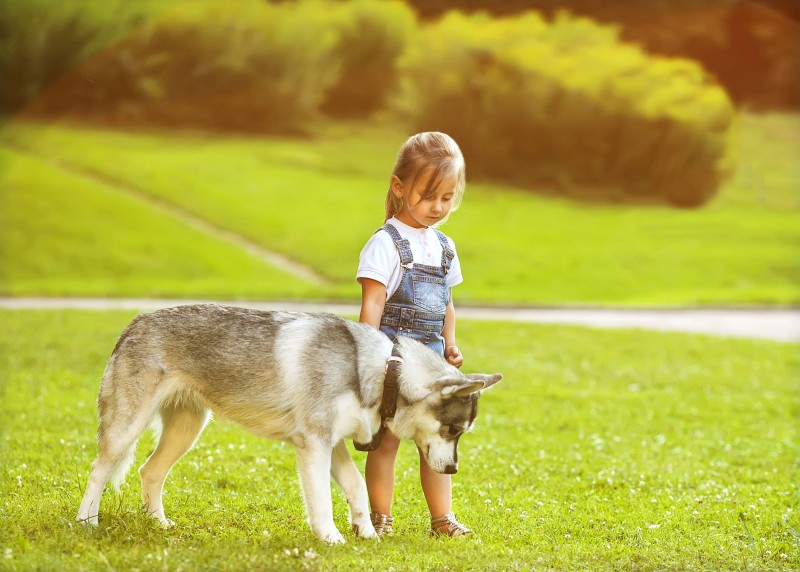Games Kids Can Play With Dogs
Posted by Jenn on 02/26/2016
There are few things more heartwarming than seeing children and dogs playing happily together. Playing with the family dog is not just a great bonding experience – it’s also a fun way to enjoy the outdoors, provide some mental stimulation for your dog, and even teach your kids important values like patience and empathy!
 SheKnows
SheKnows
It is important to remember, though, that young children do all kinds of things that can unintentionally provoke dogs – even friendly, easygoing dogs. (That is one reason that a child is much more likely to be bitten by a familiar dog than a stranger’s dog.) In addition, dogs playing with each other can be quite rough, and they do not instinctively know that playing with humans is different. Here are a few suggestions for showing kids how to play safely with their canine friends.
Games To Play With Dogs and Kids (Age 8 and Up)
- FIND THE TREAT
Get some colored plastic cups, and hide a treat under one of them. See how long it takes your dog to choose the right cup. You can make the game harder by adding more cups or spreading the cups over a wider area. - INDOOR HIDE-AND-SEEK
While the dog holds a “stay,” the child hides in the house with some treats. When the dog finds the child, the dog gets a treat and lots of praise. Don’t make this too hard at first, or the dog may not get the idea. This game can also be used to practice recall. - TRICKS
Kids love teaching dogs fun, easy tricks, such as paw, shake, high-five, and twirl. - PET-FRIENDLY BUBBLES
Have a great time watching your dog chase bubbles around the yard.
Safe Play Reminders
- Dogs should chase toys, not people. Kids should never play games that encourage dogs – even small puppies! -- to chase, jump on, wrestle, or bite humans. Rolling around on the ground with a large dog can be extremely dangerous, no matter how friendly the dog is.
- Teach children not to pull a dog’s ears, feet, or tail, and not to bother a dog who is eating or resting.
- Explain to kids that most dogs are not fond of being hugged. (Tragically, many facial dog bites happen because a child tried to hug a dog who found it threatening.) Show kids how to show affection in ways the dog will enjoy, such as belly rubs.
- Teach kids how to use positive training techniques. Have them talk to the dog in a fun, positive tone of voice, and make a big fuss to reward good behavior.
- Teach kids to “Be a Tree” if necessary. This is a much safer way to handle an aggressive dog than yelling, running, or making a lot of sudden movements – all of which can quickly make the situation more dangerous.
- Have your dog sit periodically before resuming play. This calms the dog down and reminds him that the humans control the game.
- Before you play a game like Fetch, make sure that the dog knows “drop it.” You don’t want children trying to pry toys out of a dog’s mouth to keep the game going.
- Learn how to recognize your dog’s body language, and stop the
game immediately if you sense that your dog feels uncomfortable for any
reason. Here are just a few signs to watch for:
- Aggressive: Stiff body, ears up, narrow eyes focused on a target, exposed teeth, tail standing out straight from body, hair on neck and spine standing out to make the dog appear larger
- Fearful, anxious, or stressed: Low body, tail low or between legs, ears flat against head, trembling, yawning when not tired, shaking when not wet, freezing in place, excessive drooling, pacing
- Relaxed: Tail wagging in a sweeping motion, “smiling,” gently panting, looking around with curiosity
-
Friendly and playful: Tongue out, eyes wide
open, body in the play bow position, backside wiggling
Keep in mind that young children are not very good at picking up on these cues, even when they have been taught, and tend to be oblivious to potential danger. Always supervise all interactions between children and dogs.
How do your kids and your dogs play together? We’d love to hear more game ideas and suggestions. Share them in the comments!

